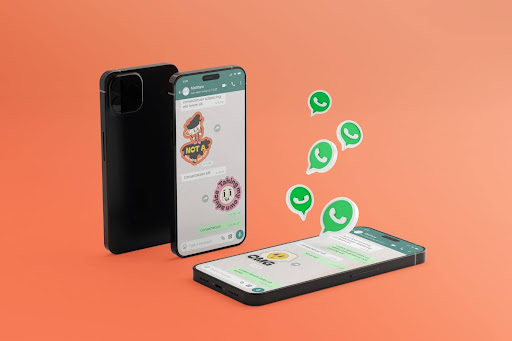WhatsApp has become one of the most powerful communication tools for businesses today. It allows companies to connect with customers instantly, build trust, and deliver messages in real time. With millions of active users across the world, WhatsApp bulk marketing has evolved into a strategic approach for brands that want to reach their audience effectively. But like any other marketing channel, success depends on how thoughtfully and professionally the campaigns are managed. Here’s a closer look at the best practices that help businesses make the most of their WhatsApp marketing efforts.
Knowing How Campaigns Actually Work
Before starting any campaign, it’s important to understand how WhatsApp communication flows. Businesses can use official WhatsApp Business APIs or verified tools to send messages to a large number of customers while maintaining compliance. These tools allow sending product updates, promotions, reminders, and even support messages—all within the same chat platform customers already use daily.
However, to run campaigns smoothly, a few things must be followed:
- Get customer consent: Businesses should always seek permission before sending promotional content.
- Use verified numbers: A green tick or verified badge helps build customer trust.
- Avoid spamming: Sending too many messages can cause customers to block the business.
- Ensure clarity: Each message should have a clear purpose or value for the receiver.
By combining compliance with creativity, companies can maintain credibility while ensuring messages don’t feel intrusive.
Writing Messages That Capture Attention
A successful WhatsApp campaign begins with writing messages that people actually want to read. Since users receive many messages daily, the first few words matter the most.
Here’s how to make messages more engaging:
- Keep it short: People prefer quick reads—limit messages to 2–3 lines when possible.
- Use personalization: Address users by name or mention their last purchase.
- Add visuals: Images or short videos can make your message more interesting.
- Include a call-to-action (CTA): Clearly tell the reader what to do next—click, reply, or visit.
- Stay conversational: Write like you’re talking to the customer, not just selling to them.
Messages that feel natural and helpful often lead to higher response rates and better campaign outcomes.
Deciding the Right Time to Send Messages
Even the best content can fail if it’s sent at the wrong time. Customers are more likely to engage when messages arrive during hours that suit them.
Some practical timing tips include:
- Send messages during business hours (10 AM–6 PM) when users are active.
- Avoid weekends or late nights unless your audience specifically prefers it.
- Test different timings for different segments to find the best response window.
Finding the perfect time to connect ensures that your campaign doesn’t go unnoticed or feel disruptive.
Keeping Campaign Goals Clear and Simple
Running campaigns without specific objectives can lead to wasted efforts. Before launching, businesses should outline what they want to achieve through WhatsApp promotions.
Common goals include:
- Driving traffic to the website or e-commerce store.
- Promoting new products or festive offers.
- Re-engaging old customers who haven’t interacted in a while.
- Gathering feedback or reviews from existing users.
When goals are clear, it’s easier to design messages, track performance, and make data-driven improvements for future campaigns.
Avoiding Mistakes That Weaken Campaigns
Many businesses make simple errors that reduce the effectiveness of their WhatsApp promotions. These mistakes can lead to lower engagement or even customer loss.
Here are a few pitfalls to watch out for:
- Over-messaging: Sending too many messages too often can frustrate users.
- Generic content: Copy-paste templates don’t feel personal and get ignored.
- No follow-up plan: Failing to respond to customer replies breaks communication flow.
- Lack of segmentation: Not all users need the same message—target based on interest or purchase behavior.
Avoiding these mistakes ensures campaigns feel professional, relevant, and customer-focused.
Tracking What Works and What Doesn’t
Once a campaign is live, tracking its performance is crucial to understanding what drives engagement. Monitoring key metrics helps refine future campaigns and identify patterns in customer behavior.
Important things to measure include:
- Delivery rate: How many messages reached the target users successfully.
- Read rate: The percentage of users who opened and read the messages.
- Response rate: How many people interacted or replied to your message.
- Conversion rate: The number of users who took the desired action after receiving the message.
Using analytics tools available with WhatsApp Business APIs can simplify this process, giving companies real-time insights into their campaign’s effectiveness.
Making Your Campaigns Feel Genuine
Customers are more likely to trust and engage with businesses that sound authentic. Even though automation is helpful, keeping communication human-centered can make a big difference.
Ways to make campaigns feel genuine:
- Use friendly and conversational language.
- Add subtle emotion through emojis—but don’t overuse them.
- Always thank customers for their time or purchase.
- Send occasional non-promotional messages, like greetings or helpful tips.
Authenticity builds stronger relationships, which in turn leads to higher customer loyalty and retention.
Why Choosing the Right Partner Makes a Difference
Managing and optimizing WhatsApp campaigns takes experience, compliance knowledge, and the right tools. That’s why many businesses prefer working with experts who understand the platform inside out. Partnering with the best WhatsApp bulk marketing company like The Future Tech can simplify campaign execution, ensure data security, and provide advanced automation options for smoother communication.
A professional partner helps businesses craft impactful messages, segment audiences efficiently, and analyze campaign results accurately. With expert support, brands can focus on their goals while ensuring their WhatsApp strategy runs seamlessly. Over time, this approach not only enhances engagement but also strengthens a company’s digital presence in an increasingly connected marketplace.

